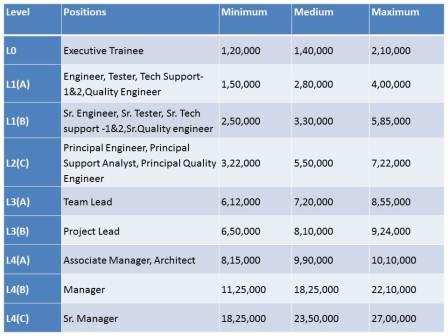Compensation Management| How to design salary band structure
Jobs salary
grade scale or simply salary band
structure acts as a guide for the HR department in the event of making
offers for new hires for a role in the organization.
Based on this information, the hiring manager
and the HR can make an informed decision on what to offer for the selected
candidates. Alternatively, for the purpose of considering a fair & equitable pay grade scale, the new entrants are
benchmarked against the similar employees (i.e., existing employee) for the
position he/she is being hired for.
To limit the salary-related discrepancies and
further to ensure internal compensation uniformity in the organization, salary
band /grids are utmost importance criteria for every professional organization
out there.
In general practice, the salary grid is prepared &
maintained by the HR team with the highest confidence. Besides, this information is
being made available for a few senior management team members only just for
their respective teams. As a norm, organizations consider pay information
highly confidential subject.
Despite being strictly confidential matter,
the fact is compensation has always
been a crispy hot topic of discussion at the coffee-table among close
associates at the workplace. As a result, it is the accountability of the HR team to
structure fair & equitable pay grades
inline with individual roles & responsibilities.
Following example will help everyone understand
the way and means to prepare pay grade
scale/ salary bands which are again unique to each organization. Note:
Figures are in Rupees, Salaries are yearly not monthly for each position,
imaginary salary figures shown for software engineers.
 |
| Salary Band (Figs. In INR yearly salary count) |
While designing
compensation bands, for ensuring external parity - benchmarking compensation with Industry plays a critical role. How an Organization positions itself
in relation to the industry competitors can strongly influence its ability to
hire and retain the desired talents. Tools like compensation surveys act as a source of information to obtain
comprehensive data on base salaries, allowance categories, incentives plans and
the benefits program in practice amongst peer group companies. Generally, organizations
can either take the help of third-party resources or alternatively can buy ready-made
compensation survey reports from
consulting organizations such as Hewitt, Watson& Wyatt and mercer.
A company starting up, a new HR department or
a unit in a new city or country can acquire prevailing compensation data with
the help of such survey reports. Instead, any organization can enrol them to
participate in such annual surveys conducted by these consulting organizations
too.
Following standard steps can be imitated by
any such organizations who all are intending to do so.
1. Recognize
the scope of the survey
2. Spot the
correct industry competitors for benchmarking
3. Arranging the
right internal compensation data for the survey
4. Comparing
& Mapping correctly the industry data with internal data. Specifically in
relation to positions, job descriptions and salary bands.
5. Recognize
the position of the company as compared to the market and benchmarking where it
wants to be as compared to the market & why so?
Hope above mentioned short guidance with
regards to the salary band structure will be of help.
Comments
Post a Comment
Please do not add any spam link in the comment box